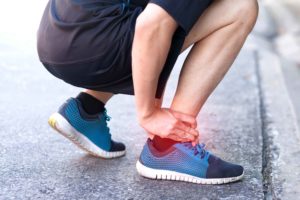Are you an injured runner? Early Signs of Running Injury and Prevention
Runners are prone to injury, especially when they start running again after a long period of rest or suddenly increase the frequency, intensity or duration of their training. Sometimes running injuries can be traumatic and sudden, while others gradually occur and worsen over time. It is very tempting to ignore those minor pains and odd symptoms that you are feeling, but here are some warning signs that runners should not neglect.
1. Pain
Most runners will tell you, “No pain, no gain” and to a certain extent, I agree. When we push our bodies during training, it is likely that we will feel some soreness in the muscles after the event. If you push yourself hard you may experience DOMS (Delayed Onset Muscle Soreness) 48 hours after the session. It has been shown that stretching and massage after such sessions can help with reducing the soreness. However, if you feel a sudden localised pain that is either mild, moderate or severe in nature this might be a sign of a strained muscle (aka pulled muscle).
It is very important after straining a muscle that you do not continue to run or play your sport and that you DO NOT try to stretch it out. Muscle strains are tears in the individual muscle fibres a bit like a cut on your skin. If you continue to overload that area or aggressively stretch it the tear will become worse. A physio will be able to advise you on how much relative rest you need to allow it to heal and provide you with a gradual rehabilitation programme to get you fit again. It has been shown that strength training helps prevent muscle injuries in runners, check out my strength exercises demo for runners here.
If you are a runner experiencing any of the symptoms above it is vital that you come in for an assessment. However, prevention is the best form of medicine. At Intouchphysio our Senior Physiotherapist Paul is conducting running gait analysis, using cutting-edge video applications to observe how you run and advise where you can improve your style to reduce the load on the joints and improve running efficiency. Runners, stop suspecting if you are injured and contact us for more information of the Running Analysis Program





